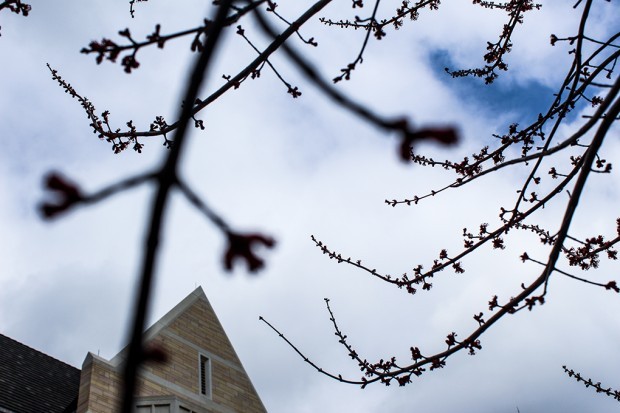
As spring quickly approaches, St. Thomas students can already be seen breaking out warm-weather essentials like hammocks and slacklines, unaware that they may be asked to take them down if using them on campus.
University policy forbids attaching bikes, slacklines or even hammocks to any of the campus’ 1,400 trees, but according to grounds turf technician Roger Weinbrenner, the purpose of this policy isn’t just to keep the campus looking pristine.
“The appearances of campus is important, yes, but it’s also to ensure the safety and quality of the trees,” Weinbrenner said. “Anything we can do to prevent damage is beneficial.”
As the popularity of hammocking and slacklining continues to increase, the practice may start to interfere with Facilities Management’s work. For now, students seem to lounge outside after prime groundskeeping hours.
“The usage that we’ve seen of the hammocks or slacklines are usually later in the afternoon and stuff, which is past our maintenance time,” Weinbrenner said. “We’re usually done doing our stuff around two, three in the afternoon before students are out using stuff.”
Despite the potential harm to campus trees, students hammocking or slacklining are usually just asked to take them down, like in senior Alexander Bates’ case.
After hanging up his hammock on South Campus, Bates observed someone slacklining get approached by a public safety officer. The officer asked the student to take down his slackline, citing it as a safety hazard and harmful to the trees before approaching Bates in his hammock.
“By this point, I probably should have been doing homework anyways, so it wasn’t a big deal,” Bates said. “It just caused me to reflect a bit and think, ‘OK, why is this rule in place? Why is it enforced?’”
After learning the reasons behind the policy — which mainly relate to tree preservation and campus appearance — Bates disagreed.
“I don’t see any real reason to ban them because they’re harmful to trees. Because to my knowledge, if done properly, slacklining doesn’t cause harm to trees. Nor does hammocking if you buy tree straps,” Bates said. “It sounds cliche, but I truly think it is harmless. There might be some safety issue, but that should be completely taken on by the student.”
According to Weinbrenner, a possible solution could include putting wooden posts around campus for students to tie slacklines and hammocks to. This way, the possible harm to trees becomes inconsequential.
“Maybe if they put (posts) by trees and set up posts specifically by trees so you hang it there and not on the trees, that could be one solution,” Bates said.
With the weather getting warmer, Bates anticipates a mixed student reaction to this rule.
“I think they’re going to see it as another pointless or useless school policy,” Bates said. “I think it’ll probably be something that will take a while before students finally get that we can’t do this and can’t have our hammocks on campus.”
Maya Shelton-Davies can be reached at shel1181@stthomas.edu.

